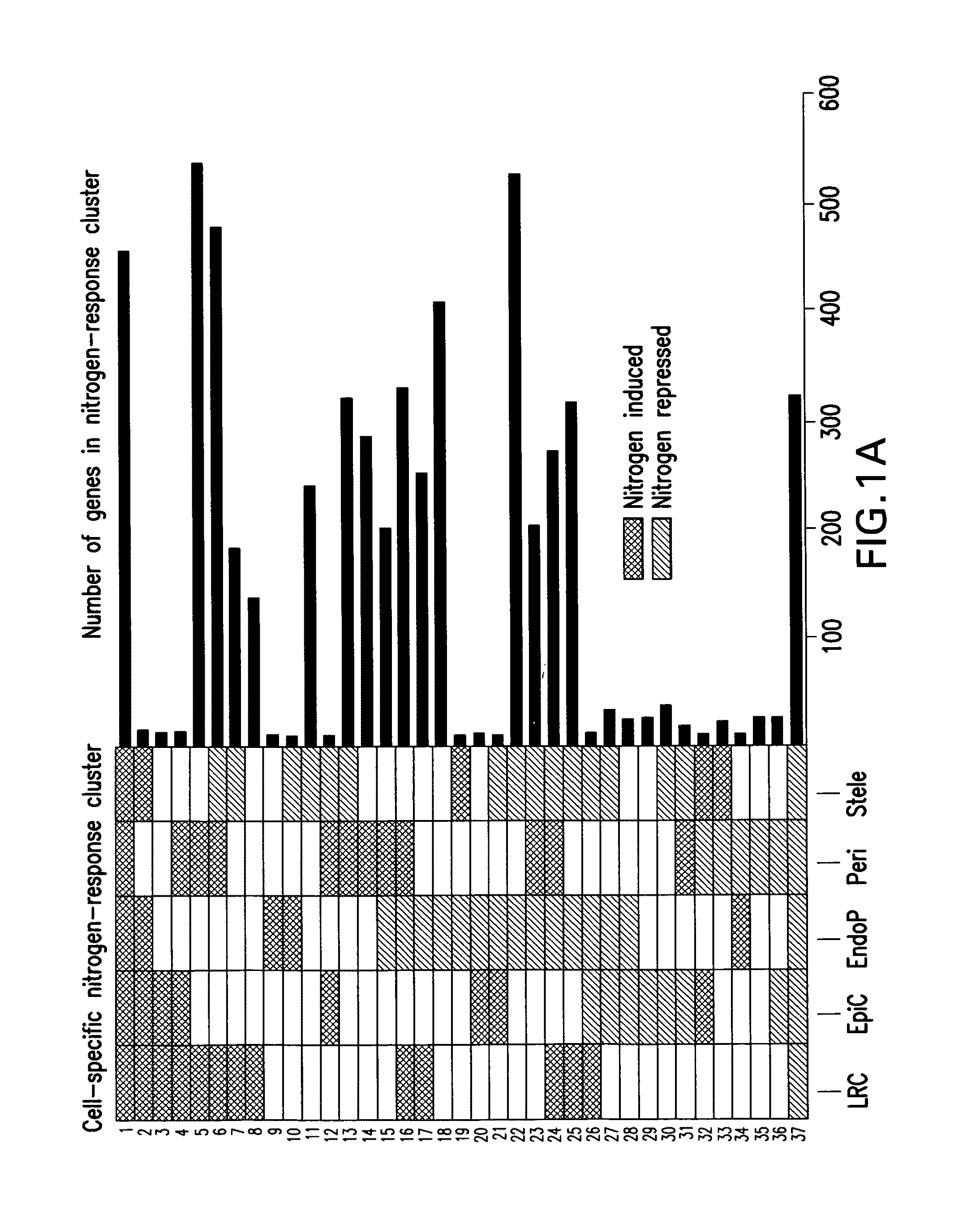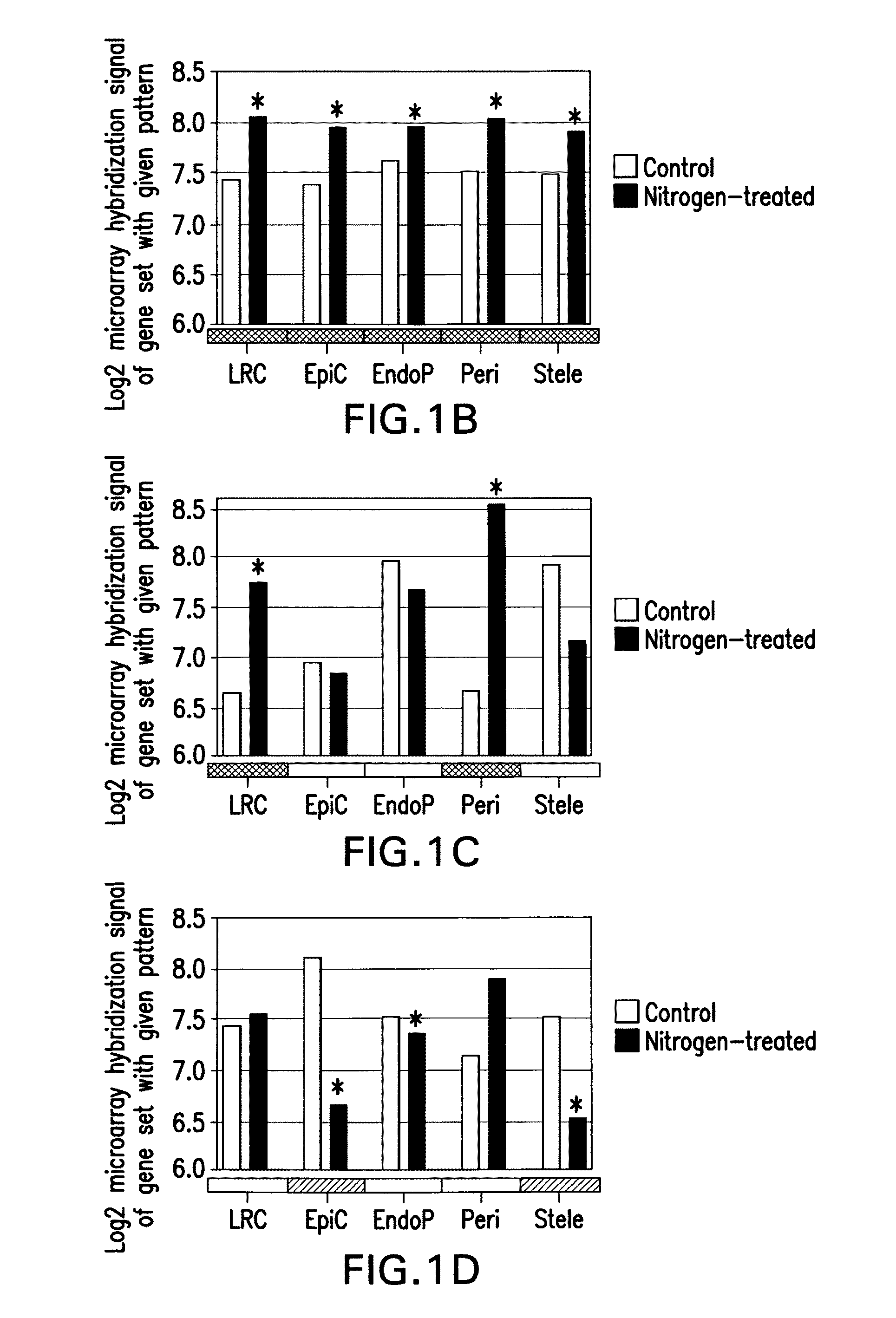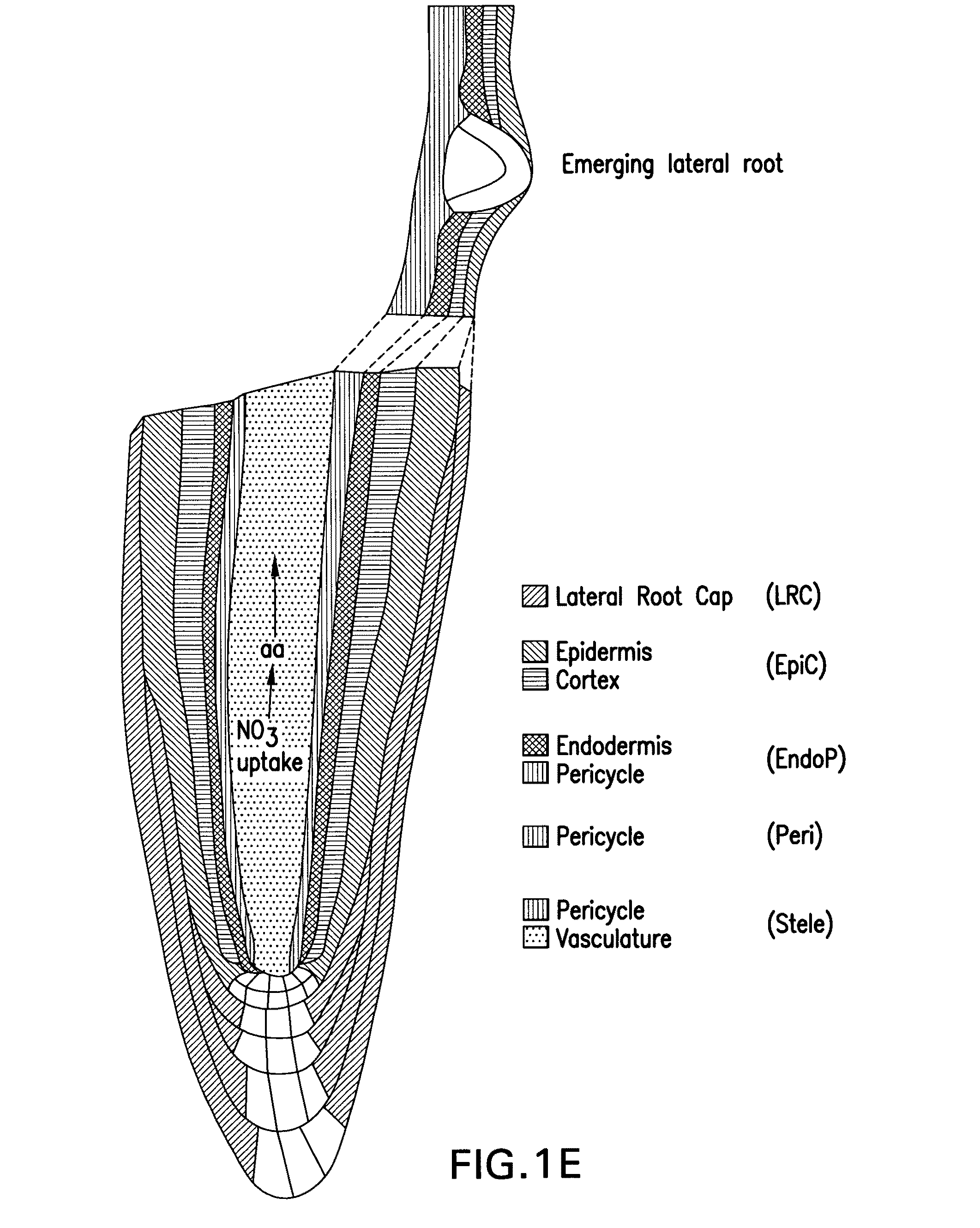Pericycle-specific expression of microrna 167 in plants
a technology of pericycle and plant, applied in the field of pericycle specific expression of microrna 167 in plants, can solve the problems of little known about the extent to which plants modulate gene expression, and achieve the effects of increasing biomass, increasing yield, and increasing plant growth
- Summary
- Abstract
- Description
- Claims
- Application Information
AI Technical Summary
Benefits of technology
Problems solved by technology
Method used
Image
Examples
Embodiment Construction
[0091]A nitrogen-inducible gene in Arabidopsis, miR167, expressed preferentially in roots, acts to specifically degrade the mRNA made from other nitrogen-responsive regulatory genes responsible for the repression of lateral root development in the presence of nitrogen. Overexprssion of miR167 in the root meristem causes altered plant sensitivity to nitrate, and lateral root proliferation in nitrogen poor zones is increased. For example, miR167 overexpressing plants display an enhanced ratio of lateral root emergence in both nitrogen sufficient and nitrogen deplete conditions. These results indicate that miR167 is a key regulator of developmental plasticity in Arabidopsis roots. Thus, the miR167 gene product is likely a component of the regulatory pathway linking external nitrogen availability to decreased lateral root proliferation and Glu / Gln (the products of nitrate assimilation regulate levels of miR167). While overexpression of miR167 in a plant increases the ratio of emerging:i...
PUM
| Property | Measurement | Unit |
|---|---|---|
| temperature | aaaaa | aaaaa |
| temperature | aaaaa | aaaaa |
| pH | aaaaa | aaaaa |
Abstract
Description
Claims
Application Information
 Login to View More
Login to View More - R&D
- Intellectual Property
- Life Sciences
- Materials
- Tech Scout
- Unparalleled Data Quality
- Higher Quality Content
- 60% Fewer Hallucinations
Browse by: Latest US Patents, China's latest patents, Technical Efficacy Thesaurus, Application Domain, Technology Topic, Popular Technical Reports.
© 2025 PatSnap. All rights reserved.Legal|Privacy policy|Modern Slavery Act Transparency Statement|Sitemap|About US| Contact US: help@patsnap.com



